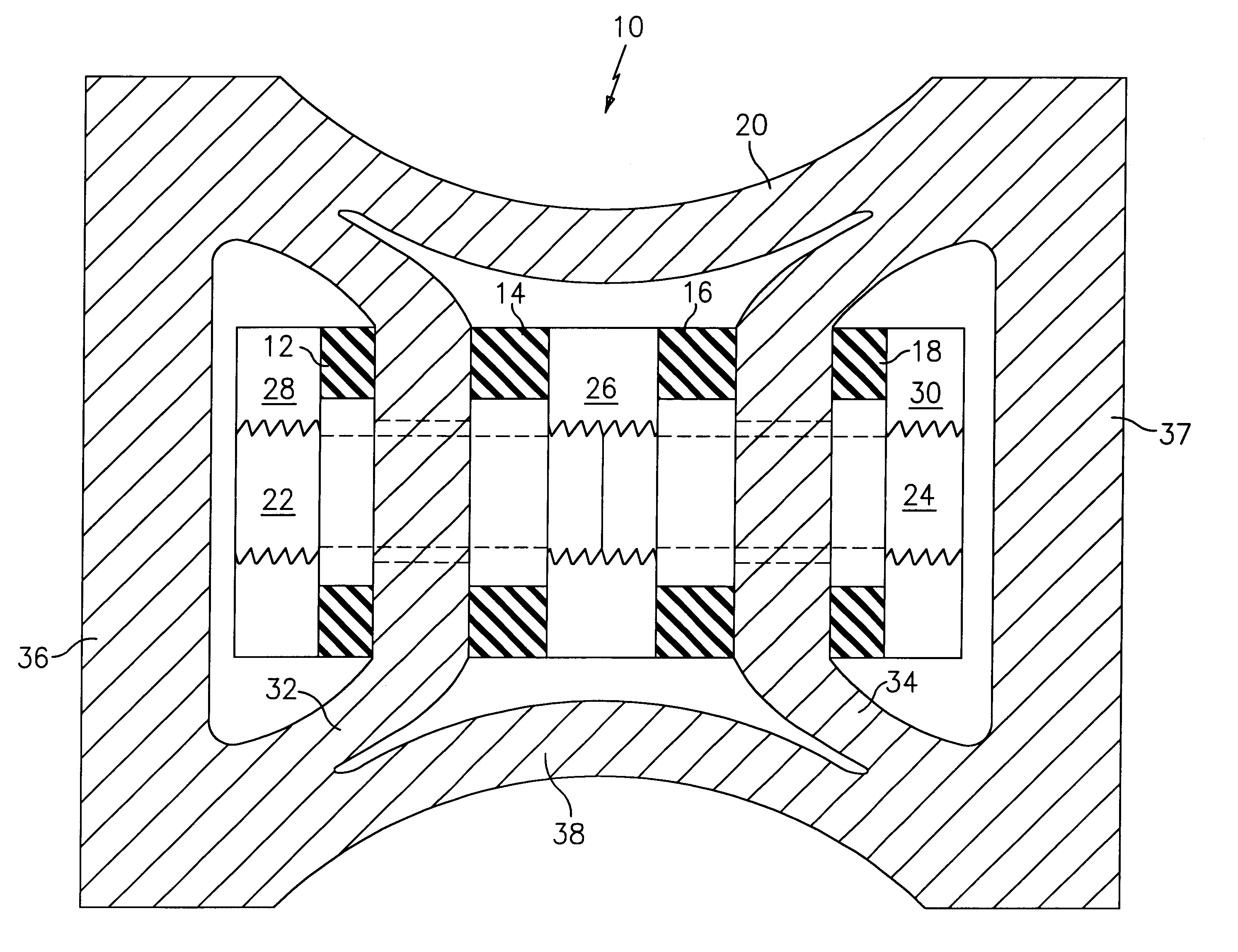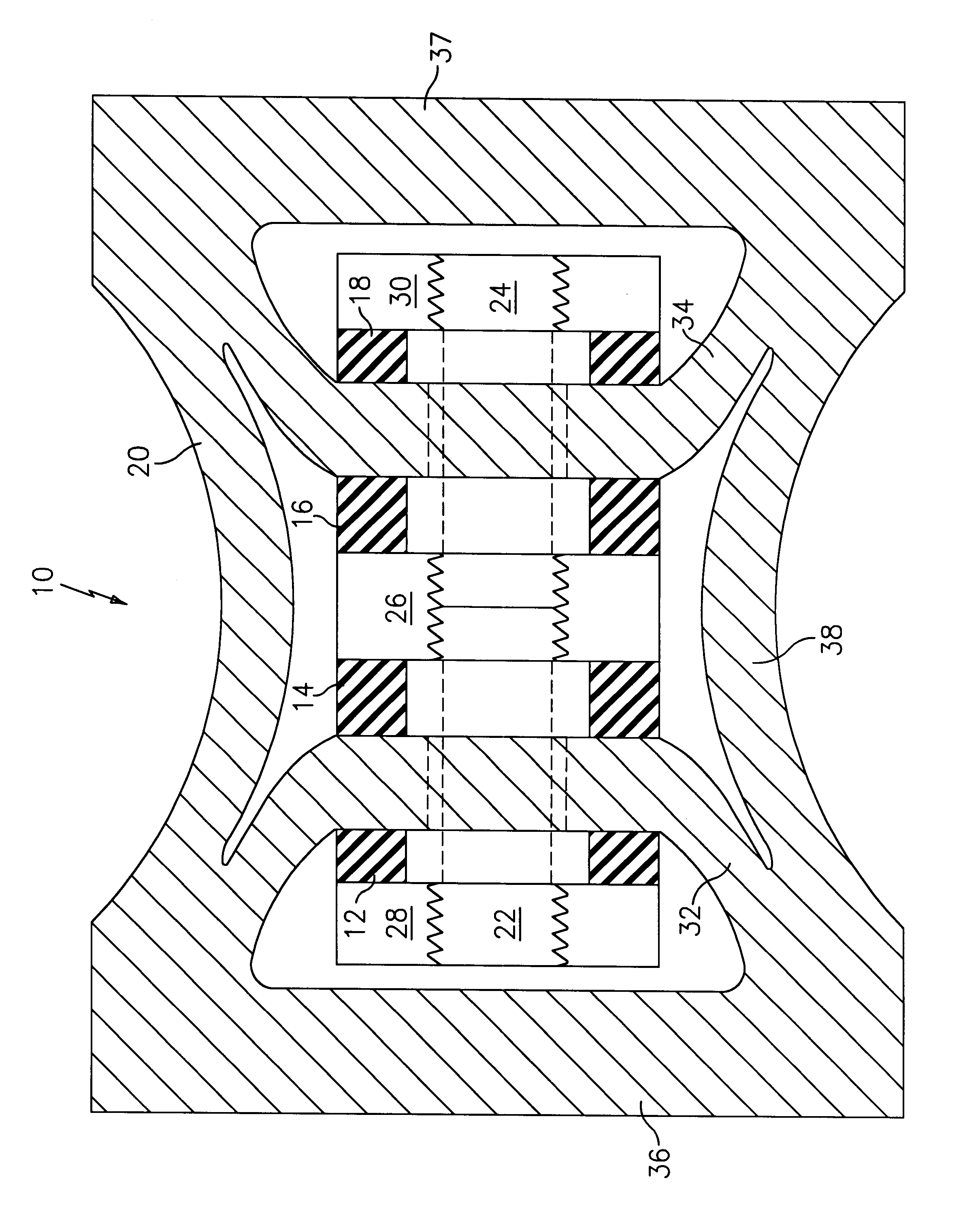Doubly resonant push-pull flextensional
a push-pull flextensional and flex-pull technology, which is applied in the direction of electrical transducers, diaphragms of transducers, instruments, etc., can solve the problem of not being able to direct substitute these new materials for those currently used
- Summary
- Abstract
- Description
- Claims
- Application Information
AI Technical Summary
Benefits of technology
Problems solved by technology
Method used
Image
Examples
Embodiment Construction
)
The FIGURE illustrates an improved flextensional transducer device 10 in accordance with the present invention. The transducer device 10 has a multi-resonant housing or shell 20 which flexes to propagate acoustic waves in a surrounding medium, such as seawater, and which has at least two tunable resonant modes. The shell 20 may be formed from any suitable material known in the art such as steel, glass fibers in an epoxy matrix, or an elastomeric material.
As can be seen from the FIGURE, the shell 20 has a dogbone shape. The shell 20 includes end sections 36 and 37 and a concave central section 38 joining the two end sections 36 and 37. The shell 20 further includes a pair of interior arcuately shaped web portions 32 and 34. A center web 26 is positioned within the interior of the shell 20 and may be joined to the shell 20 in any desired manner.
A plurality of rings 12, 14, 16, and 18 formed from an active drive material are positioned symmetrically about the midplane of the shell 20....
PUM
 Login to View More
Login to View More Abstract
Description
Claims
Application Information
 Login to View More
Login to View More - R&D
- Intellectual Property
- Life Sciences
- Materials
- Tech Scout
- Unparalleled Data Quality
- Higher Quality Content
- 60% Fewer Hallucinations
Browse by: Latest US Patents, China's latest patents, Technical Efficacy Thesaurus, Application Domain, Technology Topic, Popular Technical Reports.
© 2025 PatSnap. All rights reserved.Legal|Privacy policy|Modern Slavery Act Transparency Statement|Sitemap|About US| Contact US: help@patsnap.com


